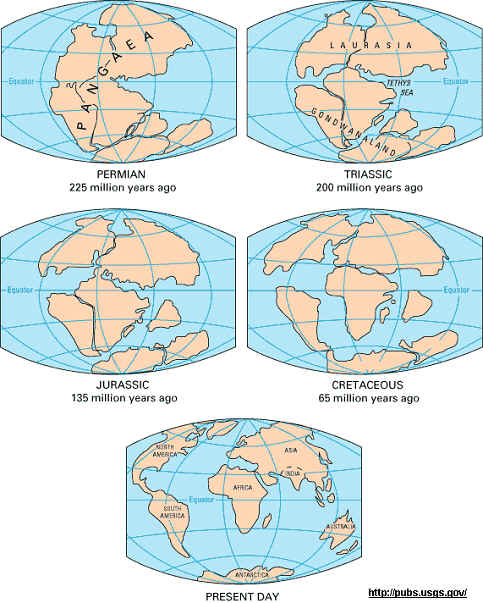Advanced Search
Lessons
- Unit Preview
- Earth Processes and Life on Earth
- Rock Cycle
- Plate Movements
- How Plants and Animal Life Developed
- Summary
Plate Movements
As you know, the outer layer of the earth is called the crust. It is made up of rock that floated to the surface when the earth was formed. This crust is not a continuous solid layer, but is made up of large rigid masses called tectonic plates.

These plates are approximately 60 miles thick and 120 miles across -- and they move slowly across the earth's surface (tectonic means moving). There are about seven major plates and many more minor ones.
Most tectonic plates move about as fast as your fingernails grow. The movement is caused by convection currents beneath the plates. These convection currents are from heating caused by energy released by radioactive particles deep in the earth. Most plates are partly oceanic (under the oceans) and partly continental (under land). It is important to remember that the continents do not coincide with the tectonic plates. Continents are either in the middle of plates, or to one side.
Oceanic plates are composed primarily of basalt, while continental plates are made mostly of rock rich in silica and aluminum.


